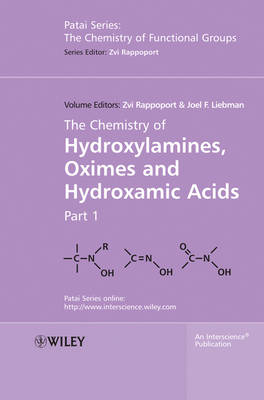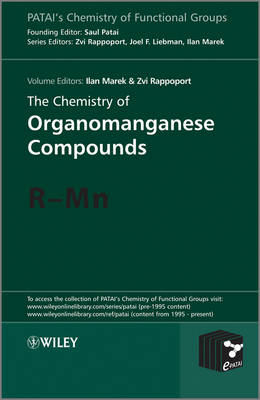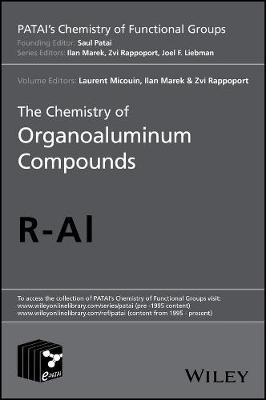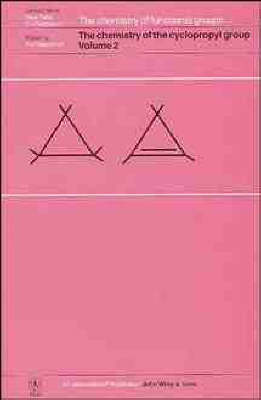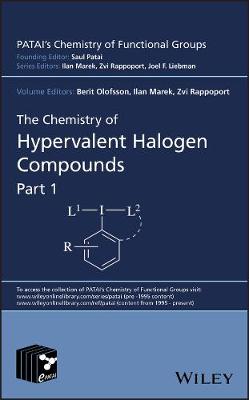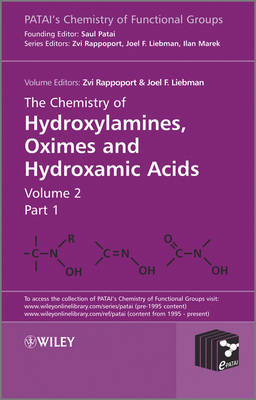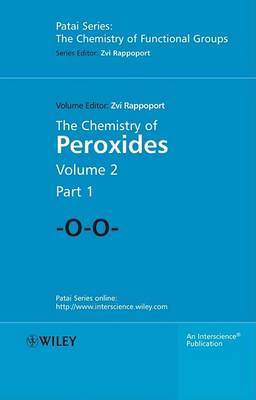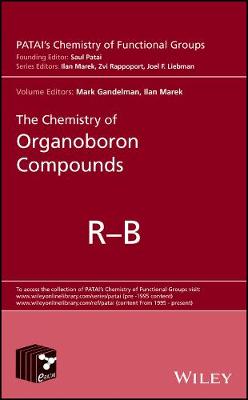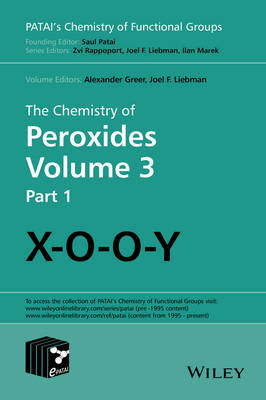Patai's Chemistry of Functional Groups
1 primary work • 11 total works
Book 175
The Chemistry of Hydroxylamines, Oximes and Hydroxamic Acids, Volume 1
by Zvi Rappoport and Joel F Liebman
The Chemistry of Organomanganese Compounds
by Zvi Rappoport and Ilan Marek
The Chemistry of Organoaluminum Compounds
by Laurent Micouin, Ilan Marek, and Zvi Rappoport
This first volume on organoaluminum compounds in the series complements the recently published volumes on other areas of organometallic synthesis, notably the volumes on organoiron, organolithium, organozinc, organocopper and organomanganese compounds.
The Chemistry of Sulphonic Acids, Esters and Their Derivatives
by Saul Patai and Zvi Rappoport
Additional chapters deal with special topics such as electrochemistry, photochemistry, radiation chemistry, thermochemistry, syntheses and uses of isotopically labelled compounds, as well as with biochemistry, pharmacology and toxicology.
The Chemistry of Hypervalent Halogen Compounds, 2 Volume Set
by Berit Olofsson, Ilan Marek, and Zvi Rappoport
The Chemistry of Hydroxylamines, Oximes and Hydroxamic Acids, Volume 2
by Zvi Rappoport and Joel F Liebman
Patai's Chemistry of Functional Groups is one of chemistry's landmark book series in organic chemistry. An indispensible resource for the organic chemist, this is the most comprehensive reference available in functional group chemistry. Founded in 1964 by the late Professor Saul Patai, the aim of Patai's Chemistry of Functional Groups is to cover all the aspects of the chemistry of an important functional group in each volume, with the emphasis not only on the functional group but on the whole molecule.
The Chemistry of Peroxides is a new volume in the Chemistry of Functional Groups series. This series covers all aspects of organic chemistry with each volume containing chapters on:
- General and theoretical aspects
- Computational approaches
- Thermodynamics and kinetics
- NMR and ESR
- Mass Spectrometry
- Spectroscopies
- Analytical aspects
- Reaction mechanisms
- Syntheses
- Biological effects
- Environmental effects
- Industrial applications
Edited by Zvi Rappoport, this series provides outstanding reviews on all aspects of functional groups in analytical, physical, synthetic and applied chemistry.
The Chemistry of Organoboron Compounds, 2 Volume Set
by Mark Gandelman, Ilan Marek, Joel F Liebman, and Zvi Rappoport
The ultimate resource in organoboron chemistry
Professor Mark Gandelman and his colleagues delve deeply into the theory, structure, analysis, synthesis, and reactions of organoboron chemistry in The Chemistry of Organoboron Compounds. Organoborons are used heavily as highly efficient reagents in many reactions, including cross-coupling and radical reactions. The highly regarded authors have tied together organic-chemical and physico-chemical knowledge usually unavailable from a single source. The book focuses on the use of completely biodegradable "green" reagents, as opposed to environmentally hazardous heavy metal catalysts.
The Chemistry of Organoboron Compounds delivers comprehensive and complete information on:
- The behavior of organoboron compounds
- The use of organoboron compounds in organic synthesis
- The commercial applications of organoboron compounds
As a volume in the celebrated Patai book series, The Chemistry of Organoboron Compounds includes all the features that readers of that series are used to enjoying, including a comprehensive index at the back of the book.
The Chemistry of Peroxides, Volume 3
by Joel F Liebman and Alexander Greer
The understanding of functional groups is key for the understanding of all organic chemistry. In the tradition of the Patai Series each volume treats all aspects of functional groups. Each volume contains chapters on the theoretical and physicochemical foundations; on analytical aspects; on reaction mechanisms; on applications in synthesis. Depending on the functional group there are additional chapters on industrial use, on medical use, and on human and environmental toxicity issues.
The last volume in the series on the topic (Peroxides Vol. 2) was published in 2006. In the eight years since then a lot of developments have taken place, especially in the areas of synthesis, analysis and a better theoretical understanding of the reaction mechanism, all of which are covered here.
As with all new volumes, the chapters are first published online in Patai's Chemistry of Functional Groups. Once a volume is completed online, it is then published in print format. The printed book offers the traditional quality of the Patai Book Series, complete with an extensive index.
The Chemistry of Nitrogen-rich Functional Groups, Volume 2
by Joel F Liebman, Alexander Greer, Ilan Marek, and Zvi Rappoport
PATAI's Chemistry of Functional Groups The Chemistry of Nitrogen-rich Functional Groups, Volume 2
A series of advanced treatises founded by Professor Saul Patai and now under the general editorship of Professors Ilan Marek and Joel F. Liebman
PATAI's Chemistry of Functional Groups publishes comprehensive reviews on all aspects of specific functional groups. Each volume contains outstanding surveys on theoretical and computational aspects, NMR, MS, other spectroscopic methods and analytical chemistry, structural aspects, thermochemistry, photochemistry, synthetic approaches and strategies, synthetic uses and applications in chemical and pharmaceutical industries, biological, biochemical, and environmental aspects. To date, over 150 volumes have been published in the series.
